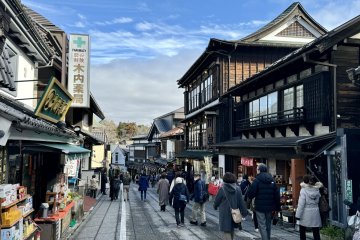

“Connecting Japan to the World.” Narita International Airport, more commonly known as Narita Airport, is an international airport serving the greater Tokyo area of Japan. Surprisingly, the highly trafficked airport is located about 60 kilometers east of central Tokyo in Narita, Chiba, as opposed to Tokyo’s other main airport, Haneda Airport, which is more centrally located in the city. Traditionally, Narita handled the majority of Tokyo’s international flights, while Haneda was a hub for domestic traffic. In recent years, Haneda has widened its reach and now includes an international terminal. Even so, Narita Airport still handles most of Tokyo’s international flights.
Narita International Airport has opened a PCR Testing Center that can provide negative coronavirus test certificates in as little as two hours for those embarking on international travel. Test & Certificate rates start from 39,800 yen for those booked for an appointment.
Narita Airport holds itself to the highest standard when it comes to passenger safety and has acquired international accreditation for its COVID-19 countermeasures under the Airport Health Accreditation (AHA) Program conducted by the Airports Council International (ACI).
Quick Facts!
Narita is the busiest airport in Japan by international passenger and cargo traffic. In 2018, Narita counted 33.4 million international passengers and 2.2 million tons of international cargo. Also in 2018, Narita was the second busiest airport in Japan in terms of flight movements (after Haneda Airport in Tokyo) and the tenth largest air cargo hub in the world.
Narita’s Airlines and Terminals
Currently, Narita Airport has connections to 65 international cities and 18 domestic ones and serves as the main international hub for Japan’s domestic airlines like JAL, ANA and low-cost carriers like JETSTAR JAPAN and Peach. The airport is divided into three terminals, all of which have international and domestic connections.
Terminal 1 serves the most international airlines, followed by Terminal 2 and then Terminal 3, which is predominantly home to low-budget ones. Terminals 1 and 2 have rail stations located onsite named Narita Airport Station and Airport Terminal 2 Station, respectively, which provide connections to and from the terminals. Although Terminal 3 does not have its own train station, it is linked to Terminal 2 via a passageway. Travel between the terminals is easy with Narita’s free shuttle buses, which run frequently and have about 10-minute travel times.
Terminal 1
International Airlines: 46 airlines including:
Domestic Airlines:
Terminal 2
International Airlines: 37 airlines including:
Domestic Airlines:
Terminal 3
International Airlines: 5 airlines:
Domestic Airlines:
Travel to Tokyo from Narita Airport
Despite its distance from Tokyo, Narita provides travelers with an abundance of convenient options to reach the capital city via railways and bus lines. Please note that the prices and travel times below are current as of April 2021.
Keisei Skyliner Express
Keisei Limited Express
JR Narita Express (NEX)
JR Sobu Line
Airport Bus TYO-NRT
Narita Shuttle
Limousine Bus
Find more about Narita to Tokyo access.
Have Fun Passing Time at Narita Airport
In addition to its efficiency and convenience, Narita is a fun place to pass time between connecting planes, trains, or buses. After arriving at the airport and before passport control, enjoy the passenger terminals where the airport diffuses natural fragrances and displays scenic visuals of Japan on large digital screens.
For international travelers leaving Japan, the airport hosts a number of cultural activities that vary monthly and are located outside and inside passport control. Visit an origami museum, take pictures of cherry blossoms, or try your hand at ukiyo-e woodblock printing, calligraphy, paper doll making, and kite making. Art lovers can stop by the Kabuki Gate, which exhibits traditional Kabuki costumes or the NAA Art Gallery, which displays a range of paintings and other art pieces. If you are pressed for time, you can still enjoy the artistic flare of Narita by admiring the works of art that decorate the facility from sculptures to tile work to stained glass windows. The cultural atmosphere will make you want to plan your next trip as you prepare to depart! Please note that some activities and exhibits may be cancelled due to COVID-19 precautions. Discover more things to do at Narita Airport.
Things to Do Around Narita Airport
After exiting the airport, why not enjoy some of the sights of the surrounding area? The region is home to numerous parks, many of which have incredible views of incoming and departing flights, including Narita Sakura no Yama, Sanrizuka Sakura no Oka, Hikoki no Oka, and Minami Sanrizuka Nature Trail, to name a few. The parks are especially popular in spring time when cherry blossoms color the trees pink. Aside from nature, the area also includes museums, a spa resort, AEON Mall Narita, Naritasan-Shinshoji Temple, and Shisui Premium Outlets. The diversity of offerings surrounding Narita Airport make it the perfect place to start your adventure in Japan. Click here for an extensive list of places around Narita Airport.

Naritasan Shinshoji Temple (成田山新勝寺) is a Shingon Buddhist temple complex founded in the 10th century. This historic site is located in Narita City, Chiba and about a 20 minute walk from JR Narita Station. Due to the station’s close proximity to Narita Airport, the temple is a perfect spot for travelers to sample the area’s rich culture during long layovers. The renowned temple is a must-see and known as the second most visited temple in Japan, after Meiji Shrine. The journey to Naritasan is a cultural experience in itself. After exiting JR Narita Station, visitors must walk along Omotesando, which is a pleasant street lined with traditional craft shops and restaurants — some serving freshly grilled eel dishes. Once visitors reach the temple, they are greeted by Niomon Gate, a grand structure whose presence hints at the notable buildings and relics within. Explore Naritasan’s highlights, though if time permits, guests should explore the entire temple and dedicate some time to prayer for an immersive and spiritual experience.

鑑於成田國際機場是日本最著名的機場之一,因此大多數入境旅客將成田市與機場這個地標聯繫起來也就不足為奇了。 然而,成田市不僅僅是一個交通樞紐,還擁有體現日本獨特性的各種目的地。